Before we get on with the photos, I wanted to say most pictures feature crape myrtles, but not all. I hope Carol at May Dreams Gardens (our underpaid Garden Bloggers Bloom Day hostess) will forgive another stretching of the rules on my part, though she should be use to it from me.
July 15, 2013
Sixth Annual Citywide Bloom Day
It's once again time to celebrate one of my favorite trees, the crape myrtle (Lagerstroemia species and hybrids). Every July since 2008 my Bloom Day post has been devoted to this tree, and if you want to know why I love it so much just click on the first post. For this Bloom Day I crossed the harbor to visit historic Fort Monroe in Hampton in search of photo-worthy blossoms. I don't have space here to go into all that has happened at Fort Monroe, you can read that for yourself. I do want to say that this place is dripping with history, particularly Civil War history and African-American history, which literally began here. The fort was decommissioned in 2011, and the land has reverted to Virginia, and fortunately the previous tenant made many improvements. The largest stone fort ever built by the United States is here, along with nearly 200 designated historic landmarks, and many recreational opportunities. It sits on over 500 acres with 8 miles of waterfront, sandy beaches, natural wetlands, and includes some magnificent trees, especially the crape myrtles and live oaks. At the moment the state, the city of Hampton and the National Park Service are trying to work out the best way to attract people to Fort Monroe while preserving what makes it special.
Before we get on with the photos, I wanted to say most pictures feature crape myrtles, but not all. I hope Carol at May Dreams Gardens (our underpaid Garden Bloggers Bloom Day hostess) will forgive another stretching of the rules on my part, though she should be use to it from me.
Abe Lincoln slept here.
The building on the right was where Robert E. Lee quartered while he was putting the finishing touches on the fort as a young engineer and U.S. Army Lieutenant.
Jefferson Davis was incarcerated at Fort Monroe after the Civil War. In the 1950's the United Daughters of the Confederacy donated this park and its odd sign for "the pleasure of military personnel and their families".
Before we get on with the photos, I wanted to say most pictures feature crape myrtles, but not all. I hope Carol at May Dreams Gardens (our underpaid Garden Bloggers Bloom Day hostess) will forgive another stretching of the rules on my part, though she should be use to it from me.
Subscribe to:
Post Comments (Atom)
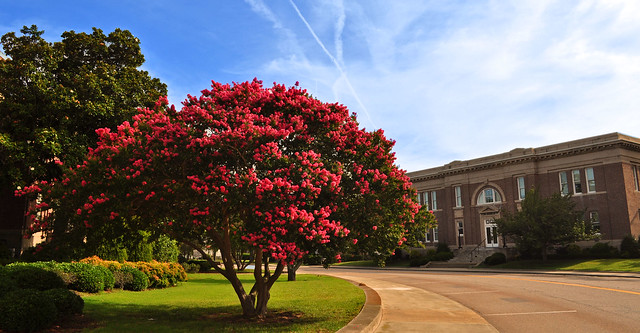
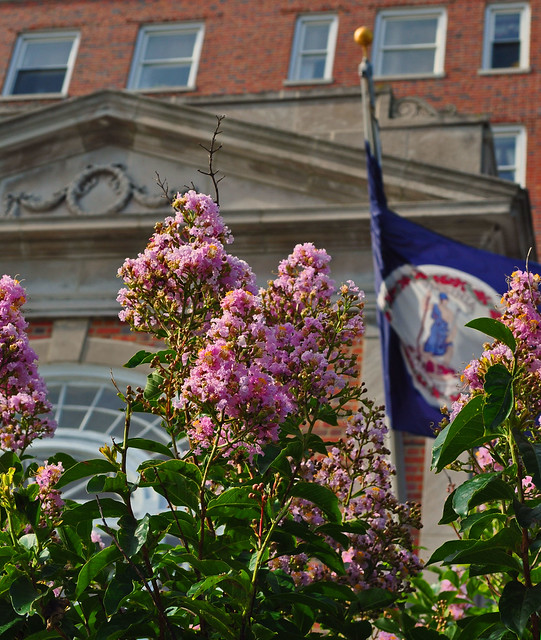

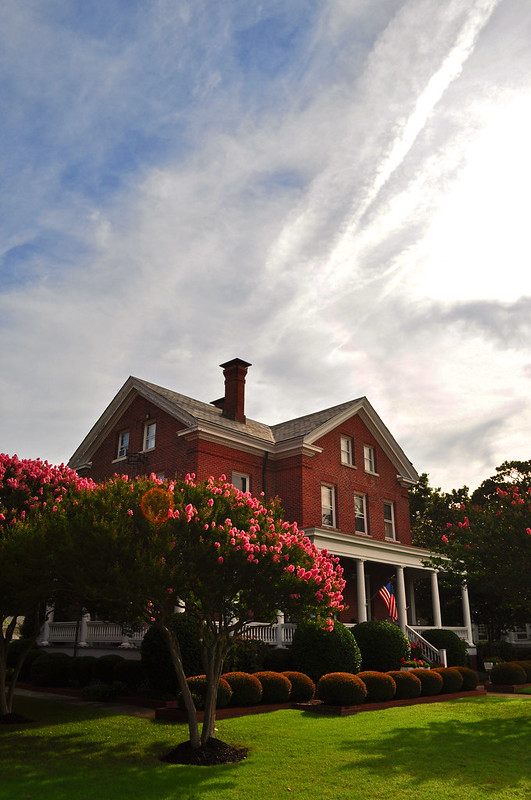
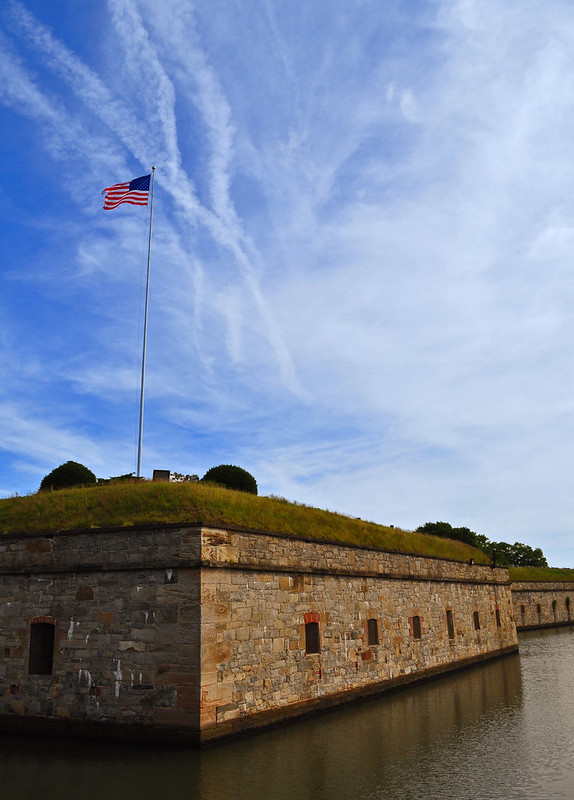
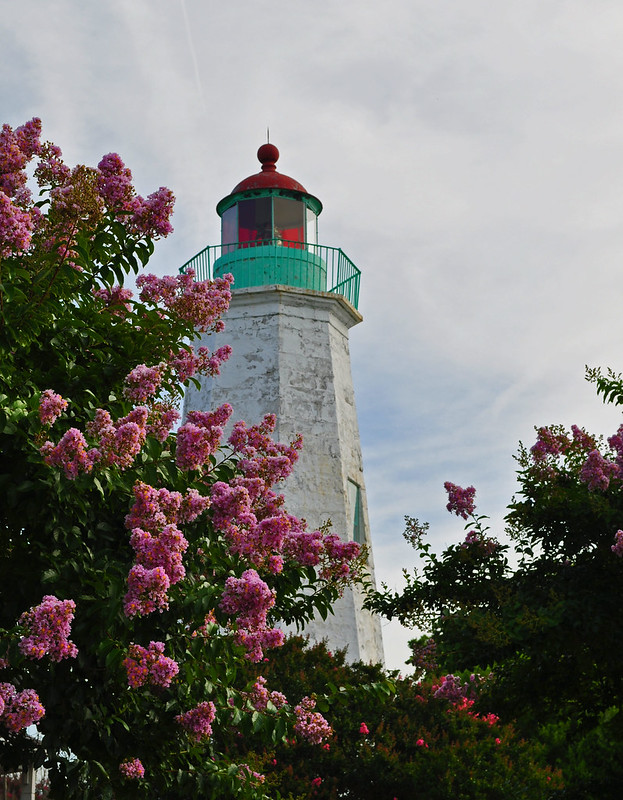
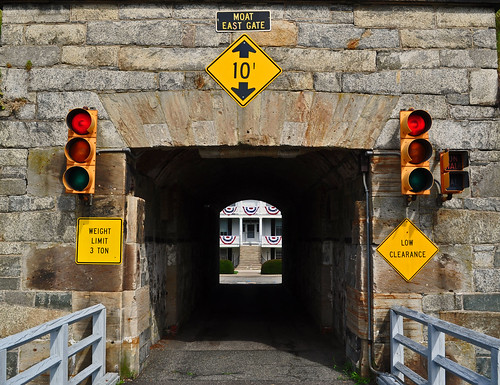


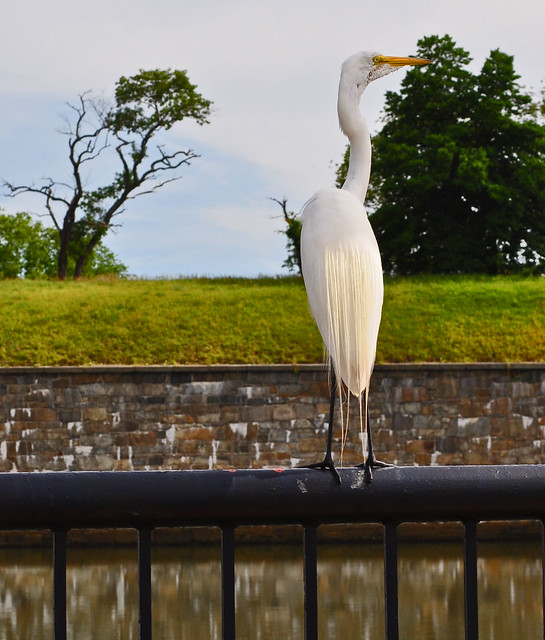
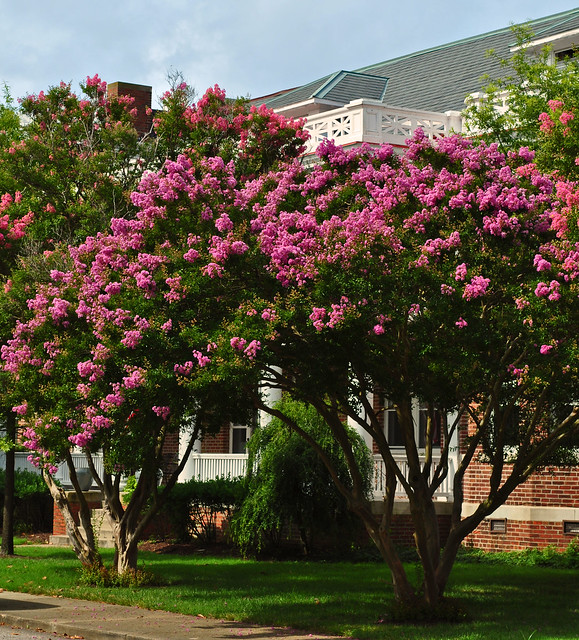
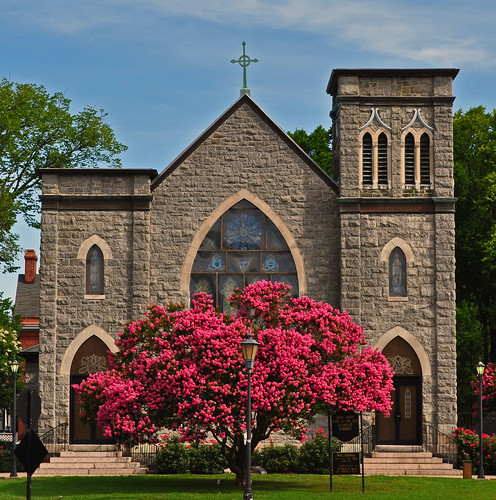
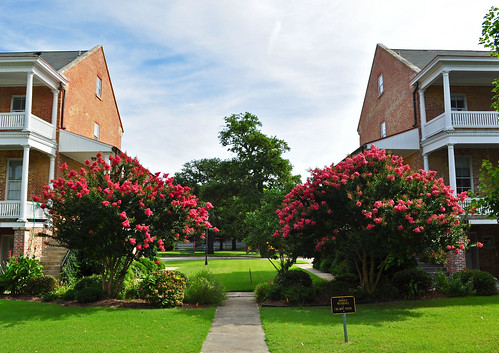
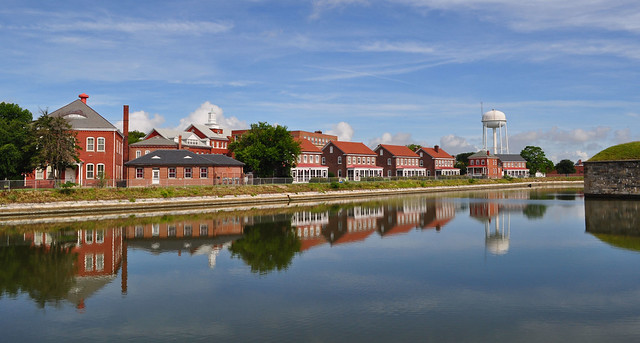

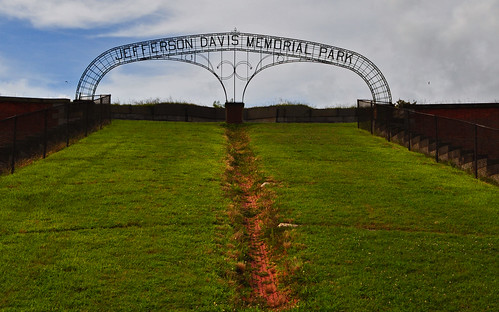
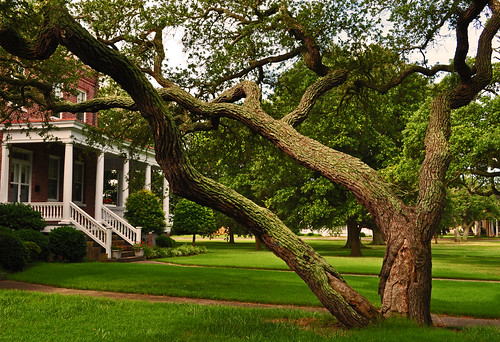









I never tire of looking at your photos especially crape myrtle since I cannot grow it in my garden. Love the little history aside. Happy Bloom Day.
ReplyDeleteThanks Layanee, maybe with global warming you will soon be able to enjoy your own crape myrtle.
DeleteGreat historic post. You just can't have too many Crape Myrtles.
ReplyDeleteMy Lilicina Crape Myrtles are in bloom, later than the pink, red and white.
They were all late here, which is fine with me. They are still at peak.
DeleteYou break no rules, this is a celebration of blooms if ever there was one. I love the Crape Myrtles and am so happy with my two little baby 'Dynamite's. Your photos are as always beautiful.
ReplyDeleteI have to say also, your blog makes me want to learn to kayak on the smooth rivers and inlets of your region.
'Dynamite' is one of my favorite reds. The color is so intense.
DeleteA beautiful place full of history! Thanks for sharing it and the gorgeous crape myrtles with us. Up here in my corner of the northwest (Is that better than being simply a northerner or Yankee?)we don't get enough summer heat for these gorgeous things to bloom very much. Sigh.
ReplyDeleteWe don't consider people on the other coast as either northerners or Yankees. I am not sure we have a name for you.
DeleteThe historic hum in the background here is missions, ranchos, so different from yours, so I appreciate your sharing it in these wonderful photos, Les. Nice crepe myrtles too! I do see a few of those around town.
ReplyDeleteDenise, I know they could stand your heat, but I am not sure you have the rain for them.
DeleteI love all the history and new information I always get from you! Wonderful looking place esp. the shot of all the buildings along the water.
ReplyDeleteThat was one of my favorite shots as well. It reminded me of some sort of company town, which it indeed was.
DeleteI love that Great White Egret. We get them here too. Fort Monroe is a beautiful place. I really like the period buildings. Lovely images Les.
ReplyDeleteThe egret jumped out at me, too. It's a fantastic photograph!
DeleteThe egret just sat there and let me take his photo. I think he made his living in the moat surrounding the fort.
DeleteBeautiful photos, as always, Les, and a fitting tribute to our best small tree. I hope the "powers that be" find the right idea for Fort Monroe...it is an amazing place.
ReplyDeleteMarian, I think we are on the right track for Ft. Monroe. I am hoping for a new national park.
DeleteI think your town has the prettiest crape myrtles. They are just stunning.
ReplyDeleteWe do them right, if I do say so myself.
DeleteI guess crape myrtles are one of those southern things, like grits. I can't really appreciate it until I experience it directly. (I do like grits now, after our trip to South Carolina.) You do live in a very scenic town!
ReplyDeleteThanks Jason. They are our only summer blooming tree, and they are our longest blooming tree as well. Some will flower until late Sept.
DeleteThe perfect alignment of the cross of the old church with the crape myrtle and lamp post is heavenly and didn't go unnoticed! But the picture that gave me the most joy was the full shot of the lighthouse with the water in the background and the overcast sky: I can practically smell the water.
ReplyDeleteThose were two of my favorite shots as well.
DeleteI actually have two ultra dwarf varieties and a dward in the garden. I see so many new varieties I can't keep up. They are a bread and butter plant in the south all the way into Texas. Being a boy once, the fort would have really piqued my interest (still does).
ReplyDeleteThe fort is a great place to poke around, not only for history lovers, but there are quite a few natural areas to explore. I noticed a kayak launch that I will likely take advantage of sometime soon.
DeleteWonderful photos, fantastic place:) Greetings
ReplyDeleteZielona, thanks for finding your way here, and greetings to you as well.
DeleteAm glad you did a post on Monroe, I still have my photos -- ready to do a post. Love that place, felt like home. Great photos. Some of my tree post photos were taken at Monroe. The Magnolia right next to Robert E. Lee's place is incredible as are the Live Oaks on the edge of the parade field.
ReplyDeleteI loved the live oaks. You can tell they have been there a long, long time. I think you would be pleased at the careful approach being taken to develop the fort.
DeleteI am always so impressed with the way Virginians grow Crepe myrtles!
ReplyDeleteI think my part of the state just has the perfect climate for them.
DeleteWow, just wow...not just the flowers, but the town itself...charming and lovely!
ReplyDeleteThanks Scott.
DeleteThanks for the relaxing walk Les. I needed that this morning. Perhaps you could re-post in January when all is winter here ...
ReplyDeleteI will pencil it in for January.
DeleteWell you got through a whole posting chock full of Crepe Myrtles and never even mention that it has some of prettiest bark you will ever see anywhere...
ReplyDeleteOur only Crepe Myrtle is tall and almost columnar. The first flowers appear about 20 feet in the air and those are only just now showing up. They are lovely trees.